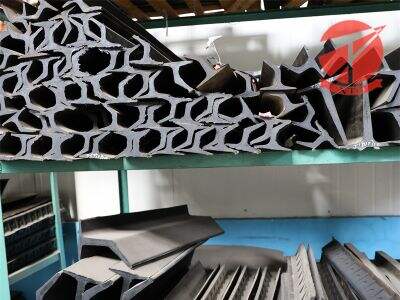Heavy industries, factories, and production sectors rely on conveyor belts, which are extremely important and convenient instruments. It is used to carry stuff like raw materials (the main building blocks for products), finished products (products that are ready to sell), and packaging (the box or wrapper that contains the product). It would take so long to move these materials from one place to another, conveyor belts makes transporting these materials easier and faster. They are saving a lot of time and effort, thus also saving money for their companies. Like so many things in life, conveyor belts find their way into a variety of sectors, from food and beverages to pharmaceuticals to automobiles. Yet, it is Shandong Xiangtong Rubber Science important to understand that there is no one-size fits all conveyor belts. There are various jobs that are aided by several kinds of conveyor belts. In this article, we will examine both the advantages and disadvantages of different types of conveyor belts and explain which ones can be used for a specific job.
Good and Bad Points
Conveyor belts may be made from a variety of other materials, including rubber, steel, plastic, and fabric. Each of these types of materials now has its pros and cons, so that some works better for some jobs, and not so much for others.
Whence Rubbers belts are substantial and lengthy sustainable They are capable of handling rough materials without damage, making them ideal for heavy-duty applications.
Steel belts are rugged and are capable of holding heavy objects. Similarly, this kind of power is also good for high-temperature conditions making it very suitable for high-performance industries.
Plastic belts enable flexibility and are commonly used to carry foods and beverages. This bulk conveyor belt is because they repel things like sugar and oil, which can grime them up.
The belt fabrics are also extremely light in weight and can move at great speeds, hence these belts are preferred for a wide range of applications in the packaging industry, do have a link to speed.
But conveyor belts of all types have a few drawbacks, as well. For example:
Rubber belts do not last long in heats, which indicates it is not recommended for hot-environment machines.
Steel belts can rust over time if they're exposed to moisture, which can be problematic for companies that need to keep their equipment running smoothly.
Plastic belts are not effective under very heavy loads, which could be a problematic feature for some industries that transport large items.
Fabric belts can fray and become worn quickly, which means they need more regular maintenance and care to keep them in good working order.
Selecting the Proper Conveyor Belt
If you decide on the best conveyor belt for your work, you need to keep some factors in mind. So ask yourself first, what kind of material you will be moving and in what way it should be handled. The material being used can mean a different kind of belt may need to be used. Next, consider where the belt will be worn. Will it be in a hot area, or will it be exposed to moisture, for example? Such factors can affect the functionality of the belt. Also think about how quickly you need the belt to move and the weights of the loads. Finally, consider the costs associated with it. This cloth conveyor belt is both the cost of purchasing the conveyor belt, as well as the costs for constructing it and any repair and maintenance over time.
How Strong and Useful is the Belt?
A very important point to keep in mind when choosing is to understand how strong and effective the conveyor belt is. Steel belts are an excellent fit if your industry needs a belt that moves rapidly and handles heavy-weight products. Because of their strength and resilience, they can be the ideal companions for demanding tasks. If you need something lightweight that can move fast however, fabric belts are the better choice. They are fast and efficient, particularly at dealing with light loads.
Consider Cost and Efficiency
Efficiency and cost-effectiveness are important aspects when selecting conveyor systems. You need to find out how much purchasing the conveyor belt will cost, how much its installation will cost, and how much it costs to operate the system over its lifetime. Rubber belts, for instance, tend to be much lower maintenance and tend to last longer than some other kinds of belts, so they could work out to be cheaper over time. That means they could save money over time, even if the initial price is higher.
Exploring Alternate Materials
Now, let’s look at all the types of conveyor belts in detail.
Rubber Conveyor Belts: This is a type of belt with a great deal of demand on the market due to its durable design, rubber conveyor belts can last for decades if used appropriately. Plus, they're ideal for using with scratchy substances such as sand, gravel and coal. But they are not effective in high-temperature environments and will degrade if exposed to heat, sunlight and humidity for prolonged periods of time. Rubber belts may not be ideal in applications where cleanliness is key.
Steel Conveyor Belts — These belts are highly durable and able to withstand high temperatures and heavy loads. A good example are industrial bearings, which are rust-resistant, can stand up to moisture and chemicals, and are used in automotive and assembly line applications where high speeds or heavy loads are a must. On the other hand, steel belts are relatively pricey, and hard to install and maintain. They also have to be built extremely precisely for them to function properly.
Plastic Conveyor Belts: These coal mine conveyor belt kinds of belts are quite flexible as well as resistant against the exposure of anything like oil, sugar or other materials. They are also light and easy to install, making them ideal to use when moving food and beverages, where cleanliness is a top priority. But plastic belts often struggle with ultra-heavy loads and break in extreme conditions. Well, they might not be as strong as other materials and could also be more expensive.
Fabric Conveyor Belts — Lightweight and easier to work with, fabric belts are best for quickly transporting lighter materials. They are widely used in the packaging industries, where speed and light loads are critical. What about the pros and cons of fabric belts? Well, in addition to being affordable and fairly low-maintenance, fabric belts usually offer a good balance of formality. They are not without some downsides, though: These tend to get frayed, so you may find you need to replace or repair them more frequently. They are not recommend for heavy loads or high heat purposes.
Finally, when choosing the optimal conveyor belt material for your industry, you must keep in mind the material you are going to need to transport, the place where the belt will be involved, the expected speed, as well as the belt loading capacity. Investigate the durability, functionality, cost-effectiveness, and efficiency of various conveyor belt materials and select the one that best meets the needs of your industry. We, Shandong Xiangtong Rubber Science, specialize in high-quality belt material conveyor other compliances that will help you increase your efficiency and productivity. Contact us today to learn more about our conveyor belts and how they can help benefit your industry!

